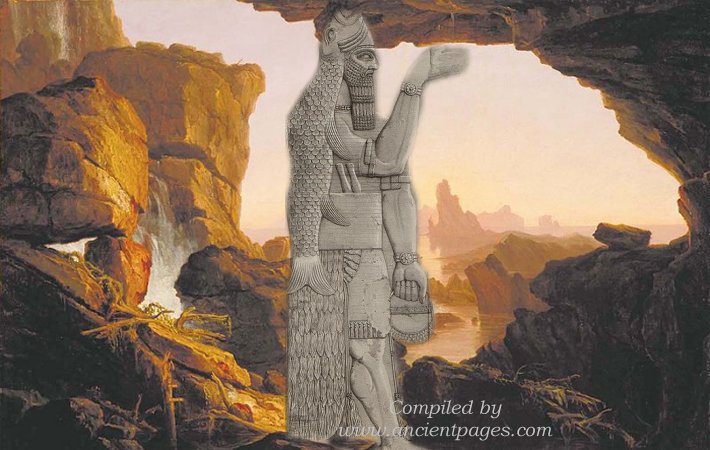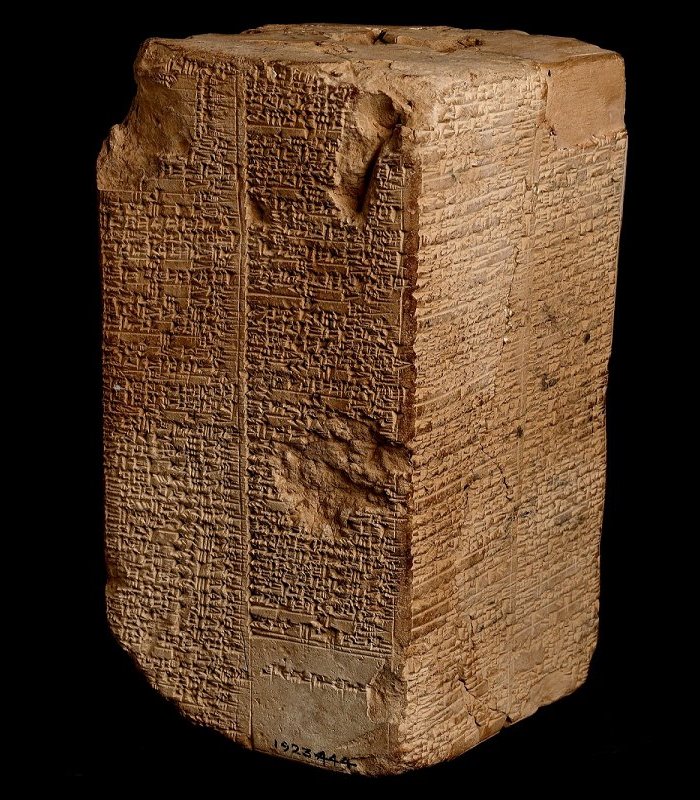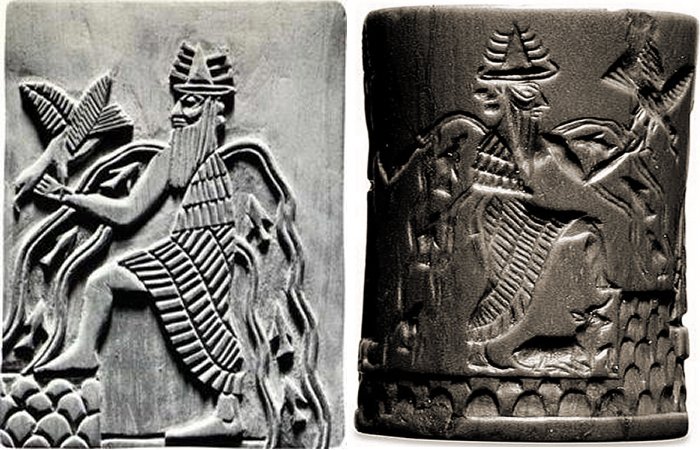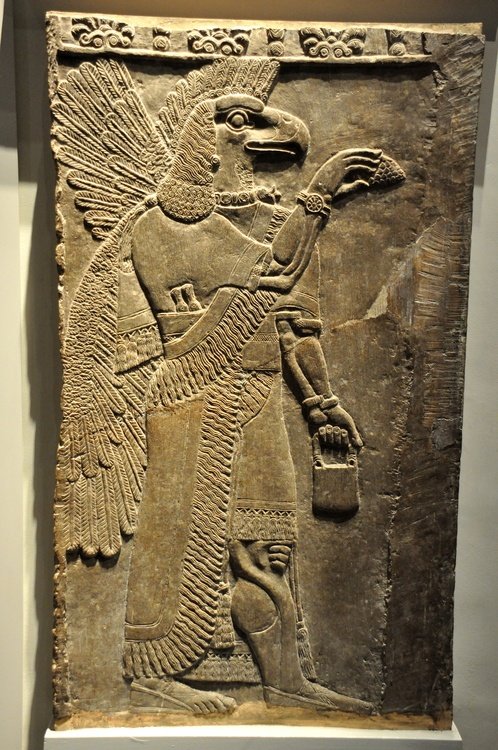Was Alulim, First King Of Sumer And Eridu Biblical Adam?
Ellen Lloyd - AncientPages.com - Alulim is a mysterious being in Mesopotamian mythology. Just like the Babylonian god Oannes, he is described as a mermaid-deity. It is said that Alulim was half-man and half fish and he ruled for 28,000 years!
Information about Alulim comes from the Sumerian King List where it is written that when Kingship was lowered from heaven, the gods established five Antediluvian Cities of the Gods, assigning to each ruler lengths of the reign that baffle scientists.
As mentioned earlier on Ancient Pages, the Sumerian King List was produced at the end of the third millennium B.C, most probably during the reign of the third dynasty of Ur. From this valuable and interesting document, discovered in the temple library of Nippur, ancient city of Mesopotamia, we learn that one of the earliest and most sacred cities of the Sumerians – Eridu (E.RI.DU – ‘Home in the Faraway Built’) was the seat of the kingship.
Eridu, belonged to Enki, God of creation, intelligence, wisdom, and magic.
Enki was the creator and protector of humans. He was a skilled craftsman as well as a brilliant scientist, geneticist, and engineer. Alulim became the ruler of Eridu.
“After the kingship descended from heaven, the kingship was in Eridug (Eridu). In Eridug, Alulim became king; he ruled for 28,800 years.” (Sumerian King List)
Stone tablet inscribed with the Sumerian King List..The clay tablet that survived was dated by the scribe who wrote it in the reign of King Utukhegal of Erech (Uruk), which places it around 2125 BC. Utukhegal was one of the first native kings of Sumer after centuries of Akkadian and Gutian dominance. Photo: Ashmolean Museum
As Zecharia Sitchin wrote in his book, There Were Giants Upon the Earth, “it is also important to remember that the various lists of reigns in the initial Cities of the Gods are lists of their successive “chief officers” and not the names of the gods to whom those cities were granted as ‘cult centers’.
Image of the Sumerian god Enki. A modern reproduction of a detail of the Adda seal (c. 2300 BC). Image via Wikipedia
All the lists agree that Alulim and Alalgar were the first rulers in the first city, Eridu; but as is clearly stated in tablet CBS-10673, Eridu was forever granted to Nudimmud—an epithet of Ea/Enki that meant ‘He Who Fashions Artifacts’; it remained his ‘cult center’ forever, no matter who was the Chief Administrator (“king”) there. (Likewise, Sippar forever remained the ‘cult center’ of the god Utu, better known by his Akkadian name Shamash; Shuruppak was always linked to the Sud—‘Medic’ Ninharsag; and so on. “
Who Was Alulim ?
Due to the lack of ancient records, it is very difficult to unravel the mystery of Alulim. Who was this enigmatic being and what role did he play in the Near East? These questions are troublesome to answer, but scholars have put forward certain intriguing theories worthy of further attention.
Professor William Wolfgang Hallo of Yale University stated that Alulim was one of the seven demigods known as Apkallu. These beings were created by the god Enki, and their duty was to establish a culture and give civilization to mankind. They served as priests of Enki and as advisors or sages to the earliest kings of Sumer before the flood. The Apkallu were fish-like men who emerged from the water Abzu, the primeval sea below the void space of the underworld (Kur) and the earth (Ma) above.
Interestingly, these seven sages are not only encountered in Sumerian and Babylonian myths, but there are also references to these seven wise men in the myths and legends of Egypt, China, ancient Greece, and India.
The seven sages were obviously very important to our ancestors and records of their existence have been preserved.
Due to their similar appearance, Professor Halo suggests that Alulim and Oannes, who emerged from the sea in ancient Babylonia to enlighten the people were the same beings. He also claims that Alulim's name means "stag".
Professor William H. Shea from Andrews University has elaborated on his theory proposing that Alulim was Biblical Adam.
Can The Adapa Epic Shed Light On The Connection Between Alulim And Biblical Adam?
“The names of the two kings who ruled at Eridu appear in order as Alulim and Alalgar. The names of the wise men associated with Alulim and Alalgar are Adapa and Uanduga, respectively. This locates Adapa as contemporaneous with the first king of the first antediluvian city, according to the tradition,” Professor Shea explained.
Apkallu from the Temple of Ninurta. This gypsum wall relief depicts an eagle-headed and winged man; this is a protective spirit or Apkallu. Credit: Osama Shukir Muhammed Amin/The British Museum, London
Determined to find a connection between Alulim and Biblical Adam, Professor Shea examined the parallels between the Adapa epic and Genesis.
According to Professor Shea, “the principal parallels between the Adapa epic and the account of Adam's actions in Genesis are readily apparent. They are threefold in nature: (1) Both subjects underwent a test before the deity, and the test was based upon something they were to consume. (2) Both failed the test and thereby forfeited their opportunity for immortality. (3) As a result of their failure, certain consequences passed upon mankind.”
Professor Shea pointed out that though the epic of Adapa and Genesis are similar, there are also differences between these two stories. “For example, the commodities for consumption in the two tests are different. Adapa was tested with bread and water while Adam and Eve were tested with the fruit of the tree of the knowledge of good and evil.”
Nevertheless, his study raises an important question – could Genesis have been based on the Adapa epic? Was Adapa, the Mesopotamian mythical figure who unknowingly refused the gift of immortality actually Biblical Adam?
Written by Ellen Lloyd – AncientPages.com
Copyright © AncientPages.com All rights reserved. This material may not be published, broadcast, rewritten or redistributed in whole or part without the express written permission of AncientPages.com
Expand for referencesWilliam W. Hallo - The Ancient Near East: A History
William H. Shea – Adam In Ancient Mesopotamian Traditions
More From Ancient Pages
-
 Chinampas: Artificial Islands Created By The Aztecs To Improve Agriculture
Ancient History Facts | May 17, 2016
Chinampas: Artificial Islands Created By The Aztecs To Improve Agriculture
Ancient History Facts | May 17, 2016 -
 Sir William Wallace: Brave Scottish Knight And Legendary Hero
Featured Stories | Feb 27, 2016
Sir William Wallace: Brave Scottish Knight And Legendary Hero
Featured Stories | Feb 27, 2016 -
 Ancient Mystery Of The Unidentified Strangely Dressed Man Found In Massachusetts And His Connection To Undeciphered Rock Carvings
Featured Stories | Sep 19, 2024
Ancient Mystery Of The Unidentified Strangely Dressed Man Found In Massachusetts And His Connection To Undeciphered Rock Carvings
Featured Stories | Sep 19, 2024 -
 Young Boy Finds Baffling Artifacts In New Mexico Predating The Anasazi, The ‘Ancient Ones’
Featured Stories | Aug 6, 2024
Young Boy Finds Baffling Artifacts In New Mexico Predating The Anasazi, The ‘Ancient Ones’
Featured Stories | Aug 6, 2024 -
 Namoratunga: ‘People Of Stone’ And Ancient Astronomical Observatory
Featured Stories | Jun 12, 2016
Namoratunga: ‘People Of Stone’ And Ancient Astronomical Observatory
Featured Stories | Jun 12, 2016 -
 Neglected Ancient Artifacts That Could Re-Write History – Evidence Of Surprising Advanced Ancient Technology That Shouldn’t Exist
Ancient and Unexplained Mysteries Library - Premium Content Preview | Feb 19, 2019
Neglected Ancient Artifacts That Could Re-Write History – Evidence Of Surprising Advanced Ancient Technology That Shouldn’t Exist
Ancient and Unexplained Mysteries Library - Premium Content Preview | Feb 19, 2019 -
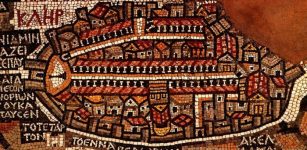 Stunning Madaba Map: Oldest Known Mosaic Built Of Two Million Stone Cubes
Civilizations | Jun 16, 2017
Stunning Madaba Map: Oldest Known Mosaic Built Of Two Million Stone Cubes
Civilizations | Jun 16, 2017 -
 Magnificent Ancient Rock-Cut Lycian Tombs Of Myra, Antalya, Turkey
Civilizations | Aug 9, 2015
Magnificent Ancient Rock-Cut Lycian Tombs Of Myra, Antalya, Turkey
Civilizations | Aug 9, 2015 -
 The Strange Story Of The Grave Of Copernicus
Featured Stories | Jan 5, 2024
The Strange Story Of The Grave Of Copernicus
Featured Stories | Jan 5, 2024 -
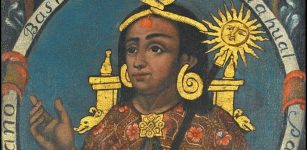 Story Of Atahualpa: The Last Emperor Of The Inca Empire
Featured Stories | Feb 4, 2016
Story Of Atahualpa: The Last Emperor Of The Inca Empire
Featured Stories | Feb 4, 2016 -
 Secret Catacombs With Incredible Ancient Skeletons Covered In Priceless Jewelry
Featured Stories | Nov 20, 2018
Secret Catacombs With Incredible Ancient Skeletons Covered In Priceless Jewelry
Featured Stories | Nov 20, 2018 -
 Pulque: Ancient Drink Of The Gods Is Popular Again But It Has Odd Side-Effects
Ancient Traditions And Customs | Jun 29, 2017
Pulque: Ancient Drink Of The Gods Is Popular Again But It Has Odd Side-Effects
Ancient Traditions And Customs | Jun 29, 2017 -
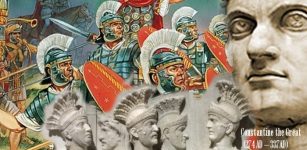 Praetorian Guard: Roman Elite Unit Assigned To Protect But Also Involved In Confinement, Execution, Spying And Threats
Featured Stories | May 26, 2018
Praetorian Guard: Roman Elite Unit Assigned To Protect But Also Involved In Confinement, Execution, Spying And Threats
Featured Stories | May 26, 2018 -
 Antediluvian Discoveries In Britain, Germany And France That Could Re-Write History
Ancient and Unexplained Mysteries Library - Premium Content Preview | Jan 4, 2019
Antediluvian Discoveries In Britain, Germany And France That Could Re-Write History
Ancient and Unexplained Mysteries Library - Premium Content Preview | Jan 4, 2019 -
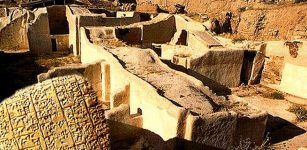 Controversial Discovery : 15,000 Ancient Ebla Tablets Prove Old Testament To Be Accurate
Archaeology | Oct 5, 2015
Controversial Discovery : 15,000 Ancient Ebla Tablets Prove Old Testament To Be Accurate
Archaeology | Oct 5, 2015 -
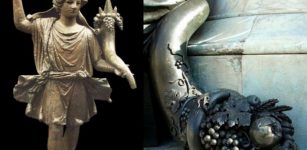 Cornucopia – ‘Horn Of Plenty’ – Ancient Symbol And Its Almost Forgotten Meaning
Ancient Symbols | Jan 14, 2019
Cornucopia – ‘Horn Of Plenty’ – Ancient Symbol And Its Almost Forgotten Meaning
Ancient Symbols | Jan 14, 2019 -
 Walls Of Lugo: Finest Example Of Late Roman Fortifications – Stands The Test Of Time
Featured Stories | Sep 22, 2022
Walls Of Lugo: Finest Example Of Late Roman Fortifications – Stands The Test Of Time
Featured Stories | Sep 22, 2022 -
 Incredible Padmanabhaswamy Temple And Its Ancient Treasures Hidden In Vaults Guarded By Serpents
Featured Stories | Jun 29, 2015
Incredible Padmanabhaswamy Temple And Its Ancient Treasures Hidden In Vaults Guarded By Serpents
Featured Stories | Jun 29, 2015 -
 Yokai Kitsune: Charming And Cunning Liar With Double Nature In Japanese Folklore
Featured Stories | May 22, 2020
Yokai Kitsune: Charming And Cunning Liar With Double Nature In Japanese Folklore
Featured Stories | May 22, 2020 -
 Selene – Greek Goddess Of The Moon And Myth About Love, Jealousy And Punishment
Featured Stories | Jan 24, 2019
Selene – Greek Goddess Of The Moon And Myth About Love, Jealousy And Punishment
Featured Stories | Jan 24, 2019

